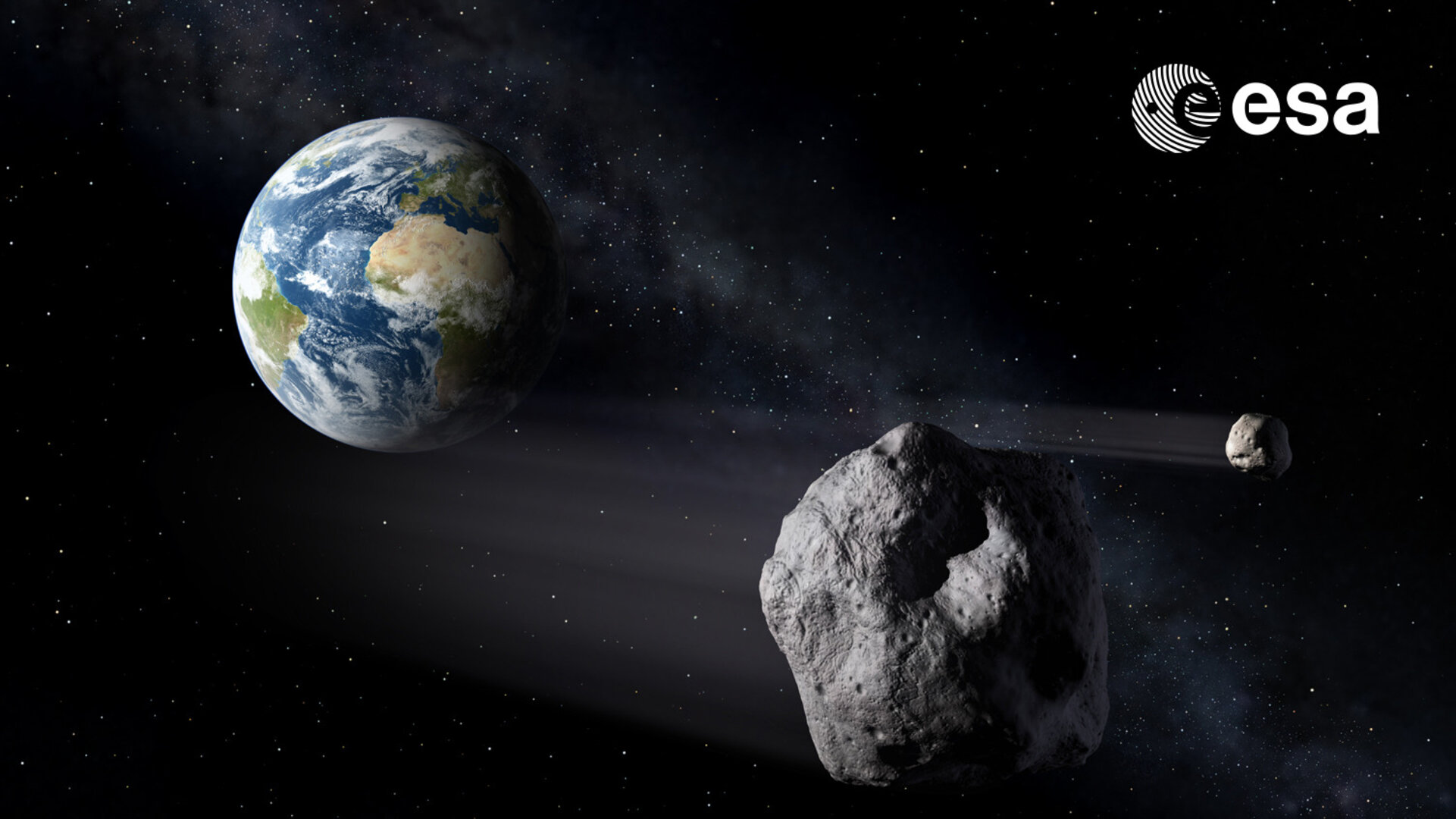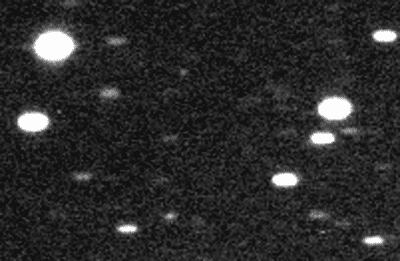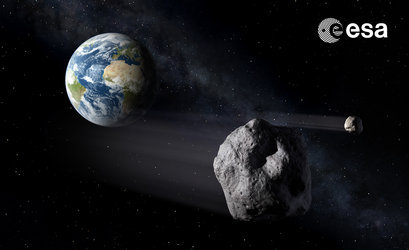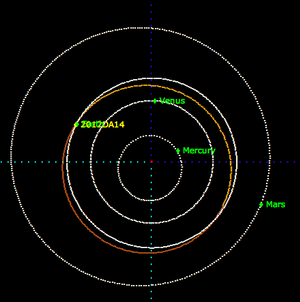Stranger in the night: space rock to make close Earth flyby
A little-known asteroid will skim past Earth on 15 February, passing just 28 000 km from our planet. The 50 m-diameter chunk of space rock was discovered last year by ESA-sponsored amateur astronomers in Spain.
Details of the ancient asteroid, 2012 DA14, are sketchy – no direct measurements of its size are available. From its brightness, scientists estimate its diameter at 50–80 m. Its composition is unknown and its mass is thought to be of the order of 130 000 tonnes.
What is known is that it will not impact Earth anytime soon.
“Its orbit can be computed quite accurately using Europe’s NEODyS asteroid database,” says Detlef Koschny, responsible for near-Earth objects at ESA’s Space Situational Awareness office.
“These computations show that a collision with Earth can be excluded quite safely at least for this century.”

On 15 February, the asteroid will make its closest pass to our planet this century when it flies by at 7.8 km/s at a distance of just within 28 000 km.
“This is well inside the geostationary ring, where many communication satellites are located,” says Detlef. “There is no danger to these satellites, however, as the asteroid will come ‘from below’ and not intersect the geostationary belt.”
The asteroid will make its closest approach at around 19:40 GMT (20:40 CET) on Friday evening next week. While tiny against the vastness of our Solar System, it should be visible in Europe to anyone with a good pair of binoculars and an idea of where to look (see link to details below).
Amateur discovery
The asteroid was discovered by the La Sagra Sky Survey, which is supported by ESA’s Space Situational Awareness programme, on 22 February 2012. The observatory is in southeast Spain, near Granada, at an altitude of 1700 m, one of the darkest, least light-polluted locations on the European mainland.
The small size and previously unknown orbit of 2012 DA14 meant that it was spotted only after it had flown past Earth at about seven times the distance of the Moon.
“If this object were made of iron and it were to hit our planet, it could create a crater comparable to the 1.5 km Meteor Crater near Flagstaff, Arizona, for example,” says Detlef. ”However, it won’t.”
Crowdsourcing rocky visitors

Finding near-Earth objects (NEOs) like these – passing close to our planet and large enough to do damage if they were to enter our atmosphere – is a major goal of ESA’s Space Situational Awareness (SSA) programme.
The SSA office sponsors a number of astronomer groups in Europe, supporting their local surveys or allocating observation time at ESA’s own telescope on Tenerife, Spain. The office also provides access to orbit predictions, close flyby details and related data via its technical web site at http://neo.ssa.esa.int.
The discovery of 2012 DA14 was particularly significant for the Agency’s SSA office because it is typical of the estimated half a million undiscovered NEOs up to 30 m across.
“Our SSA programme is developing a system of automated optical telescopes that can detect asteroids just like this one,” says ESA’s Nicolas Bobrinsky, SSA programme manager.
“In cooperation with survey efforts worldwide, our goal is to spot NEOs larger than 40 m in size at least three weeks before closest approach to Earth.”
To achieve this, ESA teams supported by European industry are developing a system of automated 1 m-diameter telescopes capable of imaging the complete sky in one night.
For further information, please contact:
Detlef Koschny
Head NEO Segment, SSA Programme Office
ESA/ESTEC, Noordwijk, The Netherlands
Tel: +31 71 565 4828
detlef.koschny @ esa.int
Gerhard Drolshagen
NEO Segment, SSA Programme Office
ESA/ESTEC, Noordwijk, The Netherlands
Tel: +31 71 565 4316
gerhard.drolshagen @ esa.int
Jaime Nomen
La Sagra Sky Survey
jnomen@oam.es
Spotting an ancient asteroid
How to see 2012 DA 14 on 15 February - information for back-yard astronomers















 Germany
Germany
 Austria
Austria
 Belgium
Belgium
 Denmark
Denmark
 Spain
Spain
 Estonia
Estonia
 Finland
Finland
 France
France
 Greece
Greece
 Hungary
Hungary
 Ireland
Ireland
 Italy
Italy
 Luxembourg
Luxembourg
 Norway
Norway
 The Netherlands
The Netherlands
 Poland
Poland
 Portugal
Portugal
 Czechia
Czechia
 Romania
Romania
 United Kingdom
United Kingdom
 Slovenia
Slovenia
 Sweden
Sweden
 Switzerland
Switzerland

































